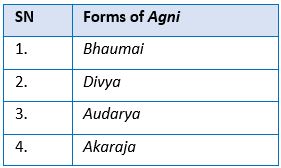A critical review on importance of Agni with special reference to its role in Allergic Rhinitis
DOI:
https://doi.org/10.21760/jaims.8.8.16Keywords:
Agni, Dhatu, Swastha, Oja, Teja, Allergic Rhinitis, Digestion, Homeostasis, TransformationAbstract
According to Ayurveda, when Doshas, Dhatus, and Malas are in Sama-Awastha and Indriya, Aatma, and Mana all are working properly then this state is considered as ‘Swastha’. To maintain the state of health, Agni should be Samagni which means in the normal state. Ingested food is to be digested, absorbed and assimilated, which is unavoidable for the maintenance of life, and is performed by Agni in Ayurveda. Agni is the invariable agent consisting digestive and different kinds of hormones, enzymes, and co-enzymes activities which plays important role in the process of digestion and transformation. Therefore, Agni is responsible for strength, health, longevity; vital breath and it determines the quantity of food to be consumed. Agni plays a huge part to keep up with body homeostasis, body working, digestion of the body, and legitimate working of the body. Major factors that cause diminished power of Jatharagni in human body includes the changing lifestyle and unhealthy food habits. Manda Jatharagni, if untreated leads to the formation of Ama Rasa. Thus, Ama formed results in Srotorodha which leads to Avarana of Udana Vata by Kapha, Pitta and Prana Vata further cause Khavaigunya. Rasavaha and Raktavaha Srotas gets vitiated and systemic manifestations are seen. In the process, Pranavaha Srotas gets vitiated, manifesting local symptoms of Pratishyaya or Allergic Rhinitis. Thus, Ayurveda considers that Agni is the cause of life, complexion, strength, health, nourishment, Oja, Teja and Prana (life energy).
Downloads
References
Sharma R. K. and Bhagwan Dash,Charaka Samhita (English translation), Volume 1st, Reprint, Chaukhambha Sanskrit Series, Varanasi, cha.sut., 2008; 12/11: 240- 41.
Sharma RK, Das VB: Editor Charaka Samhita of Agnivesa, Chikitisa Sthan; Grahani Dosa Adhyaya: Chapter 15, Verse
Sharma P. V., Sushruta Samhita (English translation), Vol I, Reprint, Chaukhambha Viswabharati, Varanasi, Su. Sutra, 2010; 14/3: 142-43.
Sharma R. K. and Bhagwan Dash, Charaka Samhita (English translation), Volume iv, Reprint, Chaukhambha Sanskrit Series, Varanasi, Cha. Chikitsa, 2009; 15/3-4: 1-2.
Byadgi P S. Agni.Parameswarappa‟s Ayurvediya vikriti vigyan & roga vigyan, 1st edition, volume 1. Varanasi, Chaukhambha Sanskrit Sansthan, 2007; 67-77.
Sharma PV: Editor, Sushruta Samhita of Dalhana, Sutrasthana; Anapanvidhi Adhyaya: Chapter 46, Verse 526, Varanasi: Chaukhambha Vishvabharati, Oriental Publishers and Distributors, 2010; I: 561.
Vagbhata. Angavibhagashaareera adhyaya Verse 50-54. In: Bhishagacharya Harishastri Paradakara Vaidya, ed. Ashtangahrdaya of Vagbhata, with the commentaries of Sarvangasundara and Ayurveda Rasayanam of Hemadri. Varanasi: Chaukhambha Surbharathi Prakashan; 2017:41.
Singh Rajesh Kumar, Shipra, Singh Ved Prakash. Concept of Agni and Ama in the development of Pratishyaya. Int. j. yogic hum. mov. Sports sci.2018; 3(1): 1150. https:// www.theyogicjournal.com/pdf/2018/vol3issue1.
Lack G. Pediatric allergic rhinitis and comorbid disorders. J Allergy Clin Immunol. 2001;108(1 Suppl); S9-S15. doi:10.1067/mai.2001.115562
Eccles R. Understanding the symptoms of the common cold and influenza. Lancet Infect Dis. 2005;5(11):718-725. doi:10.1016/S1473- 3099(05)70270-X















